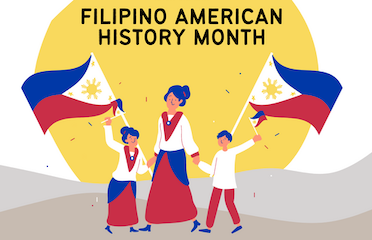
Filipino American History Month (FAHM). A commemoration celebrated annually in October to honor the rich history, contributions, and legacy of Filipino Americans in the United States. Officially recognized by the U.S. Congress in 2009, the month-long observance highlights the experiences of Filipinos in America, dating back to their arrival in Morro Bay, California, on October 18, 1587. This makes Filipinos among the earliest Asian groups to settle in North America.
The celebration emphasizes history rather than heritage, as advocated by the Filipino American National Historical Society (FANHS). This distinction ensures a focus on historical events, struggles, and achievements that have shaped Filipino American identity and their impact on U.S. society.
Historical Context

Filipino migration to the U.S. began centuries ago. The first recorded presence occurred in 1587 when “Luzones Indios” arrived aboard a Spanish galleon at Morro Bay. Later waves of migration included Filipino laborers who worked on plantations in Hawaii and farms in California during the early 20th century. The 1965 Delano Grape Strike, led by labor leader Larry Itliong alongside Cesar Chavez, marked a pivotal moment in labor rights history and highlighted Filipino Americans‘ role in advocating for social justice.
During World War II, over 260,000 Filipinos served under U.S. military command, playing a critical role in defending and liberating the Philippines from Japanese occupation. However, many of these veterans faced discrimination post-war, including being denied full U.S. citizenship and benefits despite their service.
Themes and Celebrations
Each year, FAHM adopts a theme to guide its celebrations. For example, recent themes have included “Struggle, Resistance, Solidarity, and Resilience,” reflecting the perseverance of Filipino Americans through adversity. Events often include educational panels, cultural performances, art exhibits, and community gatherings to honor Filipino American achievements.
Key figures such as Jose Calugas (a Medal of Honor recipient), Carlos Bulosan (a labor activist and writer), and Dawn Bohulano Mabalon (a historian) are frequently highlighted for their contributions to Filipino American history.
Modern Contributions
Today, Filipino Americans are the second-largest Asian American ethnic group in the U.S., with approximately 4.1 million people. Their influence spans various fields, including healthcare, education, arts, and politics. Celebrations during FAHM also aim to combat the historical underrepresentation of Filipino Americans in mainstream narratives by showcasing their ongoing contributions to society.